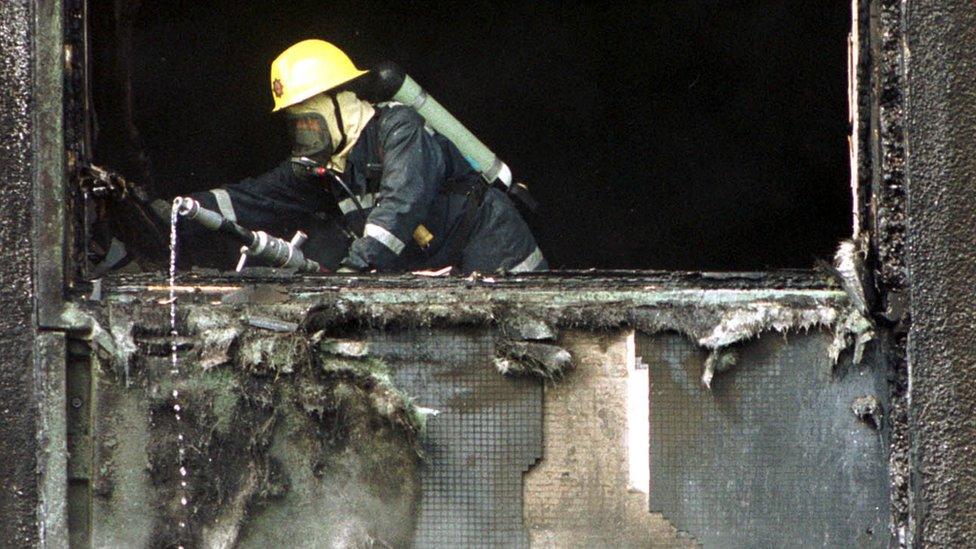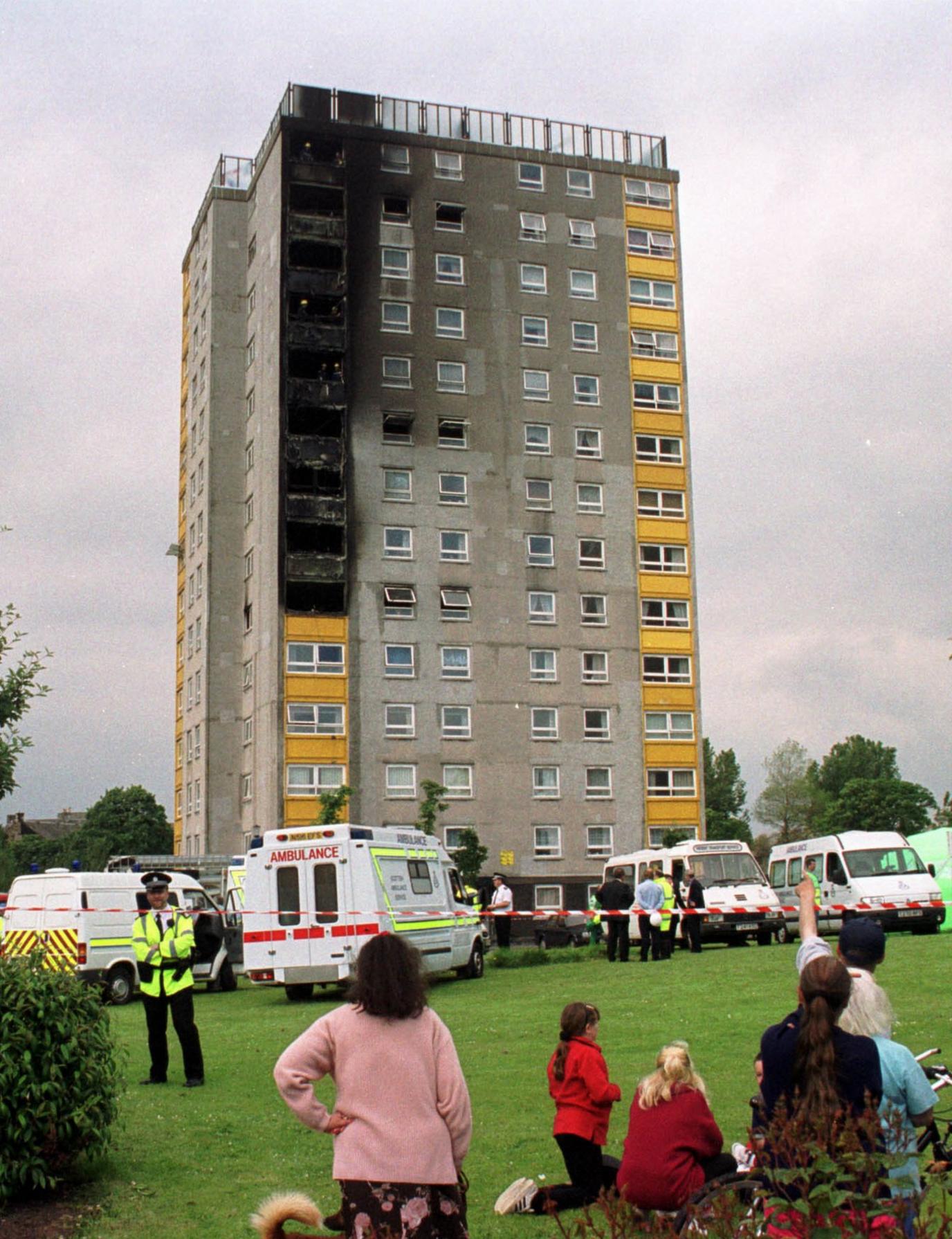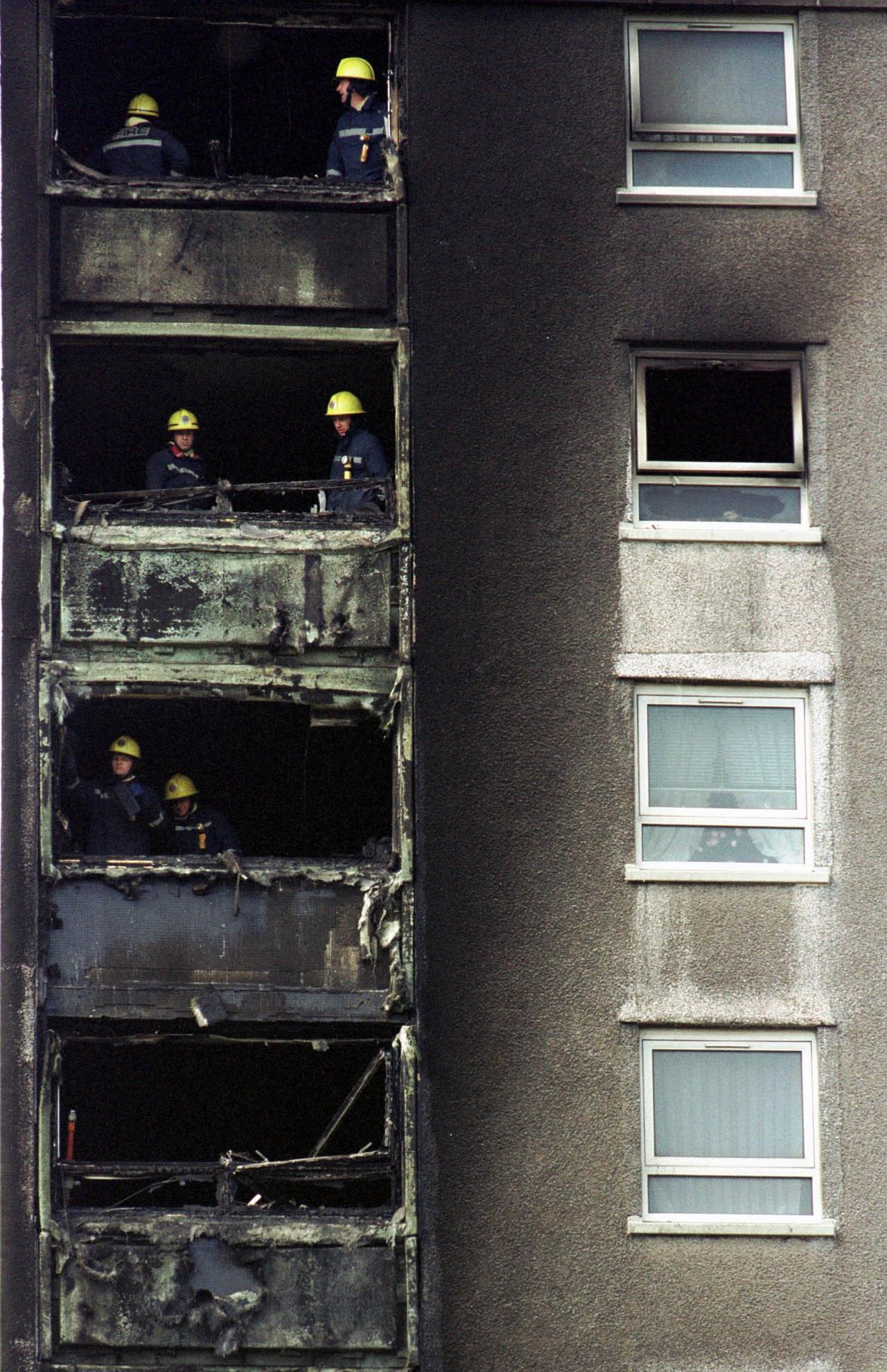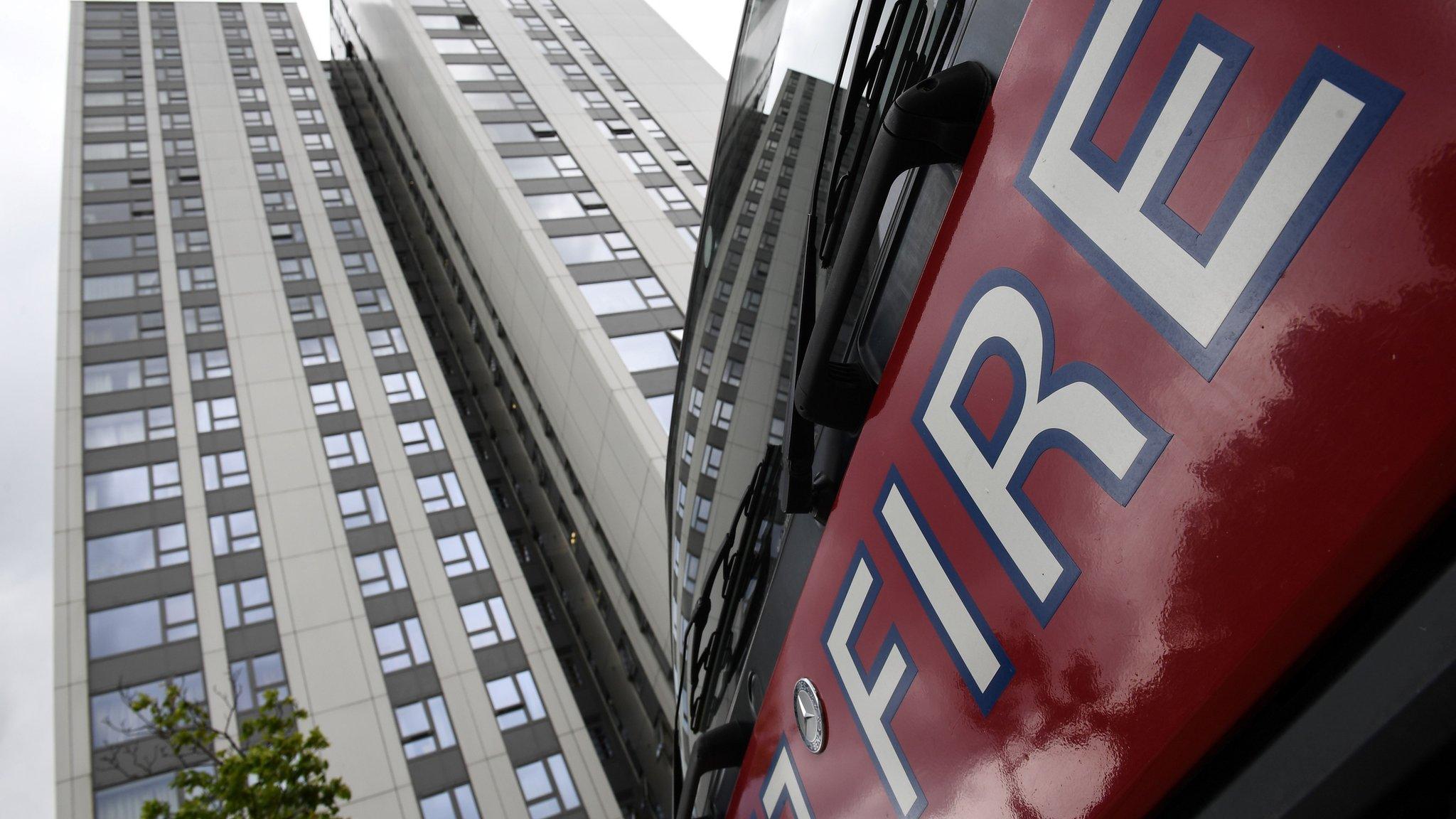How 1999 Scottish tower block fire led to regulation change
- Published

North Ayrshire Council ordered the removal of cladding from high-rise buildings after the fire in 1999
Following the Grenfell Tower, 60 high-rise buildings in 25 local authorities in England have failed fire safety tests so far. But no local authority or housing association tower blocks in Scotland have been found to use the same kind of cladding.
In Scotland, a change to building regulations in 2005 made it mandatory for builders to ensure that any external cladding "inhibited" fire spreading. The new regulations were introduced following a fatal fire in a Scottish tower block in 1999.

On Friday 11 June 1999, a fire swept through a 14-storey block of flats, external in North Ayrshire.
The blaze started at about 12:45 and ended up destroying flats on nine floors of the Garnock Court block in Irvine.
A 55-year-old man died in the fire and five other people, including a 15-month-old child, were injured.
Witnesses reported that a vertical ribbon of cladding on one corner of the block was quickly ablaze and the fire reached the 12th floor within 10 minutes of it starting.
The flats were owned by North Ayrshire Council, who ordered the removal of plastic cladding and PVC window frames as a precaution "at whatever cost" so they could be replaced with safer materials.
The then local MP, Brian Donohoe, said at the time he believed there was something "quite wrong" in the use of the cladding.
"Afterwards I had surgeries that were full of people who wanted to get out of these flats as soon as was possible. That clearly was enough to drive me and drive the council," he told BBC Scotland on Monday.
Mr Donohoe was also concerned that tower blocks across the UK which used similar cladding could be at risk, and the Labour MP pushed for a parliamentary inquiry into the extent of the problem.
The review - by the select committee on environment, transport and regional affairs - was set up quickly and reported back in January 2000, external.

The fire at Garnock Court spread to nine floors
It said the evidence received during the inquiry suggested most external cladding being used in the UK did not pose "a serious threat to life or property in the event of fire".
But the report added: "Notwithstanding... we do not believe that it should take a serious fire in which many people are killed before all reasonable steps are taken towards minimising the risks."
Committee members recommended that local authorities and registered social landlords reviewed their existing building stock and the cladding systems used.
MPs also said they wanted to make it clear that any addition to the outside of a building which had the "potential to lessen its resistance to external fire spread" should be subject to building regulations.
'Inaction of all government'
Mr Donohoe, who was MP for Central Ayrshire until 2015, said the inquiry contributed to the tightening of the rules in Scotland, where building regulations were now devolved.
"Of course, the chief executive here [North Ayrshire Council] and also the MSPs by that time were in a position to, and did, enforce change in Scotland," he said.
"Which is why we we're in the position that we have no properties in Scotland that have been identified as being failures in that respect."
Mr Donohoe added that a series of UK governments had been "remiss in their responsibilities and their duties" to people who lived in high-rise properties in England.
"[The problem] was indentified but nothing was being done. It's really a disaster that has been created as a consequence of inaction of all government and I blame that as being the main reason why we had that fire at Grenfell."

In the Scottish Parliament last week, Communities Secretary Angela Constance also cited the Irvine fire directly, external as the reason why cladding used on high-rise buildings in Scotland must use materials and design which resist the spread of fire.
Responding to a question from Labour MSP Jackie Baillie, she said: "Building standards regulations are reviewed regularly.
"In my discussions with building standards professionals in the Scottish government, they were able to recount to me the responses that they have made over a number of years to specific events and specific fires.
"For example, when there was a tragic fire in Irvine in 1999, that led to a revisiting of regulations, which meant that all cladding that was used in high-rise dwellings had to be non-combustible."
The Building (Scotland) Act 2003 introduced the Building (Scotland) Regulations 2004 which came into force, external on 1 May 2005.
It contains the mandatory regulation: "Every building must be designed and constructed in such a way that in the event of an outbreak of fire within the building, or from an external source, the spread of fire on the external walls of the building is inhibited."
The Scottish government said on Friday that no local authority or housing association high-rises in Scotland used the cladding installed on Grenfell Tower.
But the safety of Scotland's tower blocks will be examined by a Holyrood committee as part of the government's investigation into high-rise safety and building standards.
- Published26 June 2017

- Published25 June 2017

- Published25 June 2017

- Published23 June 2017

- Published22 June 2017

- Published20 June 2017
